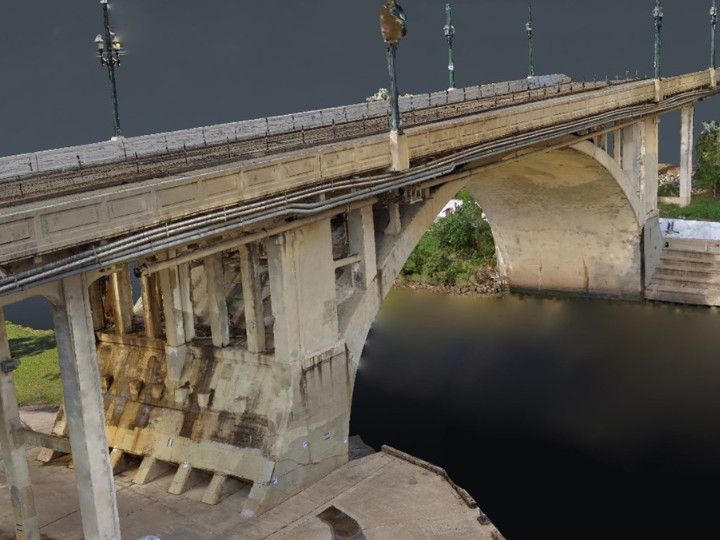UH Engineering Professor Receives $500,000 Award for Research Aimed at Improving Bridge Safety in Texas
An assistant professor at the University of Houston’s Cullen College of Engineering has received a three-year, $505,286 grant from the Texas Department of Transportation (TxDOT) to advance research on digitizing bridges using robots, data and artificial intelligence (AI) and help solve complex problems related to highway bridge safety.
“Texas is home to 55,000 bridges, more than twice as many as any other state in the country,” said Vedhus Hoskere, assistant professor in the Civil and Environmental Engineering Department. “These bridges must be inspected every two years, but traditional inspection procedures of bridges are not always effective in making sure bridges are safe. Our project with the Texas Department of Transportation is about figuring out how to best leverage technology like drones, cameras, sensors, and AI to gather a lot of data about bridges, and then use that data to make high-quality decisions.”
According to the Federal Highway Administration, Texas is in much better shape than other states with less than two-percent of its bridges considered to be in poor condition. But the state still faces unprecedented mobility demands from a rapidly growing population. Hoskere says the ultimate goal is to increase the efficiency and effectiveness of the state’s bridge maintenance programs.
“To put this data in context, we create a 3D digital representation of these bridges, called digital twins,” Hoskere said. “Then, we use artificial intelligence methods to help us find and quantify problems to be concerned about. We’re particularly interested in any structural problems that we can identify – these digital twins help us monitor changes over time and keep a close eye on the bridge. The digital twins can be tremendously useful for the planning and management of our aging bridge infrastructure so that limited taxpayer resources are properly utilized.”
Hoskere’s project, “ Development of Digital Twins for Texas Bridges,” began in September and his research will continue through August 2026. It’s the first TxDOT project for Hoskere, who also chairs a sub task group of the International Association for Bridge and Structural Engineering (IABSE) on AI methodologies for typical pathologies and degradation identification for remote inspection of bridges.

“Our international efforts align closely with this project’s goals and the insights gained globally will enhance our work in Texas while our research at UH contributes to advancing bridge digitization worldwide,” Hoskere said. “We have been researching developing digital twins for inspections and management of various infrastructure assets over the past 8 years. This project provides us an opportunity to leverage our expertise to help TxDOT achieve their goals while also advancing the science and practice of better developing these digital twins.”
Craig Glennie, the Hugh Roy and Lillie Cranz Cullen Distinguished Chair at Cullen College and director of the National Center for Airborne Laser Mapping, will serve as the project’s co-principal investigator.
“We’re very fortunate to have a world-renowned expert like Dr. Glennie be part of this project. He will contribute his knowledge and expertise on laser scanning to help realize the project’s objectives,” Hoskere said.

